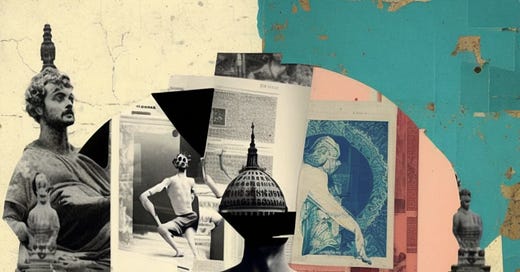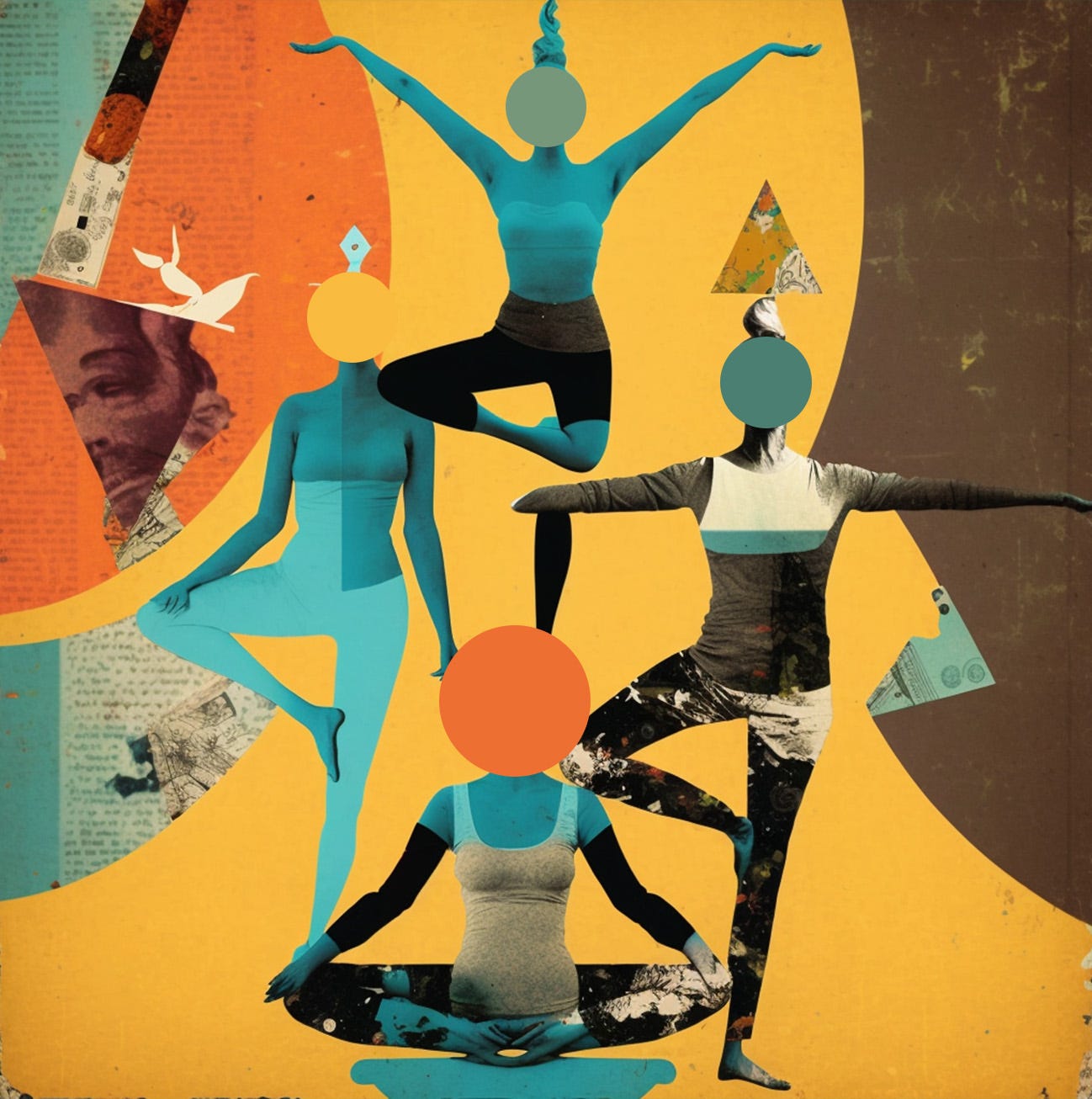Over the past several years, the future of a yoga teacher has become far less certain.
The closing of countless studios due to the pandemic coupled with the effects of social media have produced a radical shift in the climate of yoga teaching and practice. In addition, changes to studio culture in the wake of social and political change, including many critiques of existing yoga industry leaders and call-outs of past discrimination, joined with shifts in our understanding of yoga’s history have caused an identity crisis in the modern postural yoga community.
While some would lament the loss of the “way things were,” particularly the increasing logistical challenges of maintaining a brick-and-mortar studio, these changes also offer opportunities for evolution, refinement, development and the cultivation of a deeper and wiser modern yoga community.
The idea of becoming a yoga teacher as a career path is a fairly modern concept. Formerly, this was the purview of renunciants (those who had given up material wealth), and traditional lineage holders. In early modern yoga, yoga teachers were radicals, taking up a path relatively unknown to the general (Western) public. As more and more people began to learn about and practice postural yoga, those with some experience often became teachers by chance or default – as they were the one in the room who had the most experience, even if their historical or philosophical knowledge was limited.
Many early yoga centers magnified the exoticism of a contemplative practice from India, inviting in gurus – some of whom became abusive – and locating the authority of their practices in a limited understanding of yogic history. Today, the field of yoga scholarship is growing, as are the number of practitioners, yet the role of the yoga teacher remains tenuous.
In recent decades, the new paradigm of formal yoga teacher trainings, often with a set number of hours, like 200 or 500, took over the modern yoga world, and the idea of a career in teaching yoga increasingly seemed like a viable option. With brick and mortar studios continuing to close post-pandemic and a shift towards online education, this path has become more complicated. At the same time, the shift to an online model, while closing one door to aspiring yoga careerists, also opens others, including the potential to build a student body of like-minded seekers all over the world.
At the platform I founded in 2015, Embodied Philosophy, one of our editorial themes over the past few years has been connected to this question: “What is the future of the yoga teacher”? This is at once a practical, professional and philosophical question. Practically speaking, the opportunities for making a living as a yoga teacher are waning considerably, as compared to the historic “high” of modern yoga throughout the second decade of this century. Even at the apex of modern yoga’s popularity a couple of years before the Covid pandemic, most yoga teachers still needed to be living in a major metropolitan area to be able to carve out a living — which was still a hustle at best. During the pandemic, countless studios closed, and after the pandemic many of them didn’t return; or if they did, it was often in an online form, relinquishing the commitments to leasing a space in increasingly expensive rental markets.
Professionally, yoga teachers have often approached their work as a stepping stone towards or away from other careers, as a convenient side hustle as they pursue degrees or navigate other jobs. This isn’t necessarily because they don’t want yoga to be their long-term gig, but because most yoga teachers make very little money and have to commute between a number of different studios to scrape together enough to live on. With each class only around sixty minutes long added to an average of thirty minute commutes between studios and private clients, many “full time” yoga teachers only get paid for – at most – a twenty-hour work week. Given that many of these yoga teachers will leave home at around 6am to teach their first class and come home after their evening class starting at 7pm, the full investment of a teacher’s time ultimately far outweighs the gain. Most yoga teachers who do manage to make a living in this profession credit their success not to group classes, but to yoga workshops, retreats, Instagram promotional sponsorships, and other ways to monetize their skill set. There have been unique and admirable attempts by yoga teachers to unionize themselves or by studio owners to make their teachers salaried employees, but the culture of yoga teaching and the part-time nature of its work has made many such efforts fruitless.
Indeed, yoga teachers have been stuck between a rock and a hard place, and as Embodied Philosophy introduces its own 200-Hour Yoga Teacher Training in 2025, we are eager to imaginatively explore how the position of the yoga teacher might evolve. We want to discover how, in this otherwise challenging time for yoga teaching, we can reconnect to yoga’s philosophical roots and more subtle practices as a way of revivifying the broader public’s perception of yoga’s transformative potential.
This evolution comes on the heels of an awakening regarding yoga’s history, in part incited by the work of modern yoga scholars and the considerable work that has been done to excavate the origins of haṭha yoga. The longstanding idea that what we do on a yoga mat at the gym is a practice that has been done similarly for 5000 years is a myth that doesn’t stand up to the evidence – to put it all too mildly. And yet, while modern yoga is just that – modern – does this mean we need to see ourselves as completely apart from the history we are thankfully (and responsibly) learning more about? Because the spiritual teachings of yoga arise from a culture quite different than the native one of most “Westerners”, does that mean that we should feel guilt over the possibility that we are colonizing, or appropriating? If one of the things we have been learning is how diverse yoga’s historical forms and traditions have been – and that there have always been many yoga perspectives and practices – what makes the modern postural tradition unique when compared with other historical shifts with regards to what philosophies and practices are emphasized? One note of singularity about modern postural yoga might simply be its reach – never before have the practices of yoga become so ubiquitous, and largely accepted, in societies around the world.
True to Embodied Philosophy’s origins as a platform that seeks to innovatively integrate the ancient and modern, at the same time that we reflect on the yoga teacher’s future we are called to anchor ourselves more resonantly with its past. Entertaining what the future holds does not necessitate a further departure from the liberative aims so frequently cited as yoga’s most authentic goal. Instead, the future we hope to envision together is one that owns the ignorance and imbalances embedded in certain ways that yoga has been articulated in the West. We will be able to express gratitude to modern yoga in the West for sparking an interest in the teachings of yoga in so many diverse beings, while still gently disavowing the practices and perspectives that no longer serve us. We seek to both connect with yoga’s esoteric, ritualistic, and intellectual past, and to interact with the modern theoretical perspectives that allow us to shed light on our blind spots. This future, we hope, will be a wiser and more mature one, making the continued presence of yoga in our world a source of compassion rather than callousness, insight rather than ignorance, liberation rather than subjugation.
As Embodied Philosophy embarks on a new experiment in training a new generation of teachers, we will have an opportunity to explore the future of the yoga teacher through occasional articles, conversations, panel discussions, interviews, and a continuation of our annual summit (which has now been held twice – in both 2023 and 2024). We will continue to look at the yoga teacher through the lens of multiple intersections. Somatics, psychotherapy, scholarship, activism, and trauma-informed perspectives are just a few of the orientations that modern yoga finds itself in fruitful conversation with. Exploring how yoga informs and is informed by these professional disciplines will open us to possibilities for how a modern yoga teacher might consider their pathway into the future. We will explore how recent events have shaped the trajectory of the yoga teacher and the yoga studio, as well as discuss how the identity of the modern yoga practitioner has shifted in the wake of conversations around cultural appropriation, trauma, abuses of power, and dynamics of cult and conformity.
We invite yoga teachers and all members of the Embodied Philosophy community to come on this journey with us; to communicate, explore, and discover – in a spirit of openness and community – what might lie around the corner. If we plant seeds together with intention, attention, and an awareness grounded in contemplative study and practice, we can progress toward a future more brightly lit by the lamp of wisdom.






